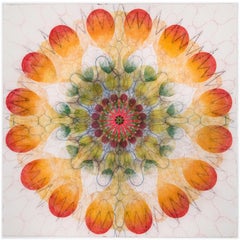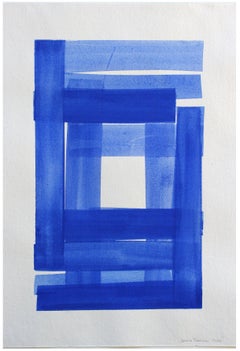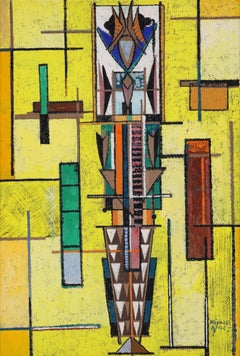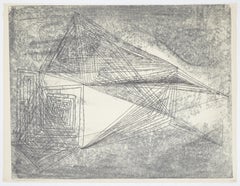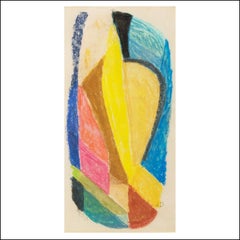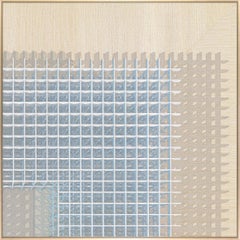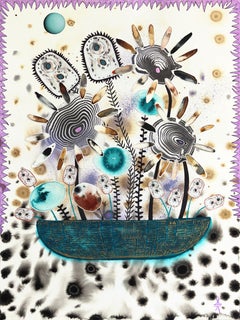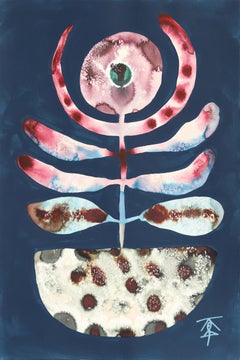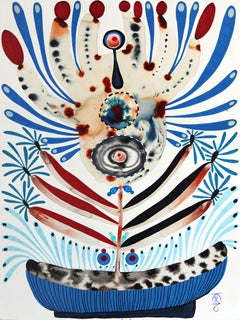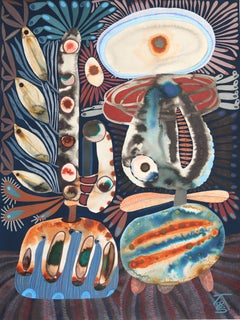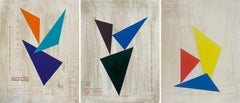Abstract Drawings and Watercolors
2010s Abstract Abstract Drawings and Watercolors
Paper, Ink
21st Century and Contemporary Abstract Abstract Drawings and Watercolors
Paper, Ink, Acrylic, Watercolor, Color Pencil
21st Century and Contemporary Abstract Abstract Drawings and Watercolors
Paper, Ink, Acrylic, Watercolor, Color Pencil
21st Century and Contemporary Abstract Abstract Drawings and Watercolors
Paper, Ink, Acrylic, Watercolor, Color Pencil
21st Century and Contemporary Abstract Abstract Drawings and Watercolors
Paper, Ink, Acrylic, Watercolor, Color Pencil
2010s Contemporary Abstract Drawings and Watercolors
Archival Ink, Acrylic, Bamboo Paper
1950s Pop Art Abstract Drawings and Watercolors
Watercolor, Graphite
1960s Abstract Expressionist Abstract Drawings and Watercolors
Fiberglass, Paint, Watercolor
2010s Abstract Abstract Drawings and Watercolors
Monoprint
Mid-20th Century American Modern Abstract Drawings and Watercolors
Paper, Graphite
21st Century and Contemporary Contemporary Abstract Drawings and Watercolors
Paper, Ink
21st Century and Contemporary Abstract Abstract Drawings and Watercolors
Paper, Ink, Acrylic, Watercolor, Color Pencil
2010s Abstract Abstract Drawings and Watercolors
Paper, India Ink
21st Century and Contemporary Abstract Abstract Drawings and Watercolors
Paper, Ink, Acrylic, Watercolor, Color Pencil
1970s Pop Art Abstract Drawings and Watercolors
Canvas, Acrylic, Laid Paper, Permanent Marker
21st Century and Contemporary Constructivist Abstract Drawings and Watercolors
Cotton Canvas, Acrylic, Graphite
21st Century and Contemporary Abstract Abstract Drawings and Watercolors
Paper, Ink, Acrylic, Watercolor, Color Pencil
2010s Abstract Abstract Drawings and Watercolors
Paper, Acrylic
2010s Abstract Abstract Drawings and Watercolors
Charcoal
21st Century and Contemporary Abstract Geometric Abstract Drawings and Watercolors
Paper, Oil Crayon, Ink, Mixed Media, Acrylic, Pencil
2010s Minimalist Abstract Drawings and Watercolors
Crayon, Ink, Wax, Acrylic, Washi Paper
21st Century and Contemporary Abstract Abstract Drawings and Watercolors
Paper, Ink, Acrylic, Watercolor, Color Pencil
20th Century Abstract Abstract Drawings and Watercolors
Ink
Mid-20th Century Abstract Impressionist Abstract Drawings and Watercolors
Oil
Mid-20th Century Abstract Impressionist Abstract Drawings and Watercolors
Oil
1970s Abstract Expressionist Abstract Drawings and Watercolors
Ink
2010s Contemporary Abstract Drawings and Watercolors
Ink, Archival Paper, Color Pencil, Graphite
Mid-20th Century Abstract Impressionist Abstract Drawings and Watercolors
Oil
2010s Minimalist Abstract Drawings and Watercolors
Paper, Ink, Watercolor
21st Century and Contemporary Abstract Abstract Drawings and Watercolors
Paper, Ink, Acrylic, Watercolor, Color Pencil
Mid-20th Century Surrealist Abstract Drawings and Watercolors
Graphite
Mid-20th Century Abstract Impressionist Abstract Drawings and Watercolors
Oil
Early 2000s Abstract Abstract Drawings and Watercolors
Paper, Gouache
Mid-20th Century Abstract Impressionist Abstract Drawings and Watercolors
Oil
Mid-20th Century Cubist Abstract Drawings and Watercolors
Paper, Charcoal, Pastel
2010s Minimalist Abstract Drawings and Watercolors
Paper, Acrylic, Watercolor
Mid-20th Century American Modern Abstract Drawings and Watercolors
Paper, Ink
2010s Abstract Abstract Drawings and Watercolors
Paper, Ink
2010s Abstract Abstract Drawings and Watercolors
Paper, Watercolor
1960s Abstract Drawings and Watercolors
Paper, Gouache
1860s Abstract Drawings and Watercolors
Paper, Pastel, Pencil
2010s Abstract Abstract Drawings and Watercolors
Enamel
Late 20th Century Abstract Geometric Abstract Drawings and Watercolors
Paper, Gouache
Mid-20th Century American Modern Abstract Drawings and Watercolors
Gouache
1970s Surrealist Abstract Drawings and Watercolors
Paper, Ink
1980s Abstract Abstract Drawings and Watercolors
Paper, Watercolor, Graphite
2010s Abstract Expressionist Abstract Drawings and Watercolors
Paper, India Ink, Acrylic
21st Century and Contemporary Contemporary Abstract Drawings and Watercolors
Canvas, Paper, Acrylic
20th Century Abstract Abstract Drawings and Watercolors
Watercolor
1980s Abstract Geometric Abstract Drawings and Watercolors
Canvas, Paper, Acrylic
1960s Abstract Abstract Drawings and Watercolors
Tempera, Watercolor
1970s Surrealist Abstract Drawings and Watercolors
Color Pencil
1970s Surrealist Abstract Drawings and Watercolors
Paper, Ink
1970s Surrealist Abstract Drawings and Watercolors
Paper, Ink
1990s Color-Field Abstract Drawings and Watercolors
Crayon, Mixed Media, Oil, Watercolor, Graphite, Monoprint
1970s Minimalist Abstract Drawings and Watercolors
Ink, Oil
1960s Color-Field Abstract Drawings and Watercolors
Mixed Media, Color Pencil
1980s Abstract Expressionist Abstract Drawings and Watercolors
Permanent Marker
2010s Abstract Abstract Drawings and Watercolors
Paper, India Ink, Color
Mid-20th Century Neo-Expressionist Abstract Drawings and Watercolors
Paper, Pastel, Cardboard
